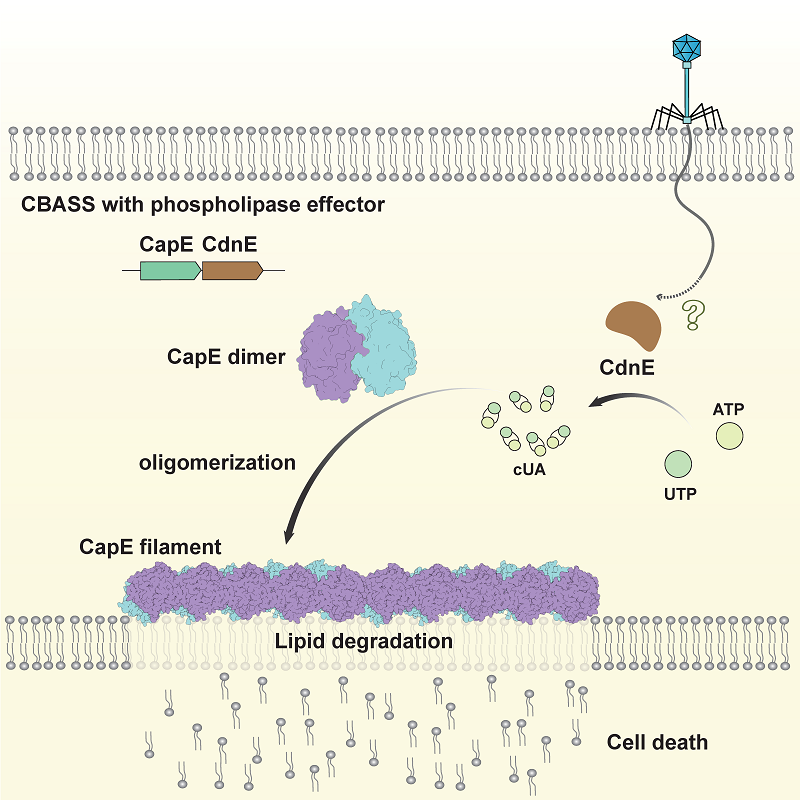Scientists Reveal How Cyclic Dinucleotides Activate Broad-Spectrum Immunity through Phospholipase Filament Assembly
On May 8, 2025, researchers from the Institute of Biophysics of the Chinese Academy of Sciences, together with collaborators from the Beijing Institute of Technology, published a new study in Cell, revealing how cyclic dinucleotides (CDNs) induce filamentous assembly of effector phospholipases to activate the CBASS immune system.
CBASS (Cyclic oligonucleotide-Based Anti-phage Signaling System) is a critical component of innate antiviral defense in bacteria, with core effector modules conserved across both prokaryotic and eukaryotic immunity. Despite recent advances, the molecular mechanism by which CDNs activate downstream effectors remains incompletely understood.
Focusing on CapE, a representative phospholipase effector in CBASS systems, the team employed a combination of cryo-electron microscopy and X-ray crystallography to determine its structures in three distinct states: an inactive dimer, a CDN-bound higher-order assembly, and a substrate-analog-bound catalytic mimic. These snapshots together reveal the full conformational transition underlying CapE activation.
CDN binding induces a structural rearrangement that exposes CapE's catalytic site and drives its polymerization into ordered filaments. These filaments serve as active platforms for phospholipid cleavage, enabling rapid and robust immune activation.
Structure-guided mutagenesis further confirmed that both filament formation and catalytic activity are essential for CBASS-mediated membrane disruption and cell death, underscoring the functional importance of this activation mechanism.
This study establishes a direct molecular link between CDN sensing and effector activation, offering a unifying model for how CDNs initiate membrane-targeting immune responses. It also highlights filament formation as a conserved strategy for modulating enzymatic activity across immune systems.

Figure. Model of anti-phage defense by CapE
(Image by GAO Pu's group)
Article link: https://www.cell.com/cell/fulltext/S0092-8674(25)00457-X
Contact: GAO Pu
Institute of Biophysics, Chinese Academy of Sciences
Beijing 100101, China
E-mail: gaopu@ibp.ac.cn
(Reported by Prof. GAO Pu's group)

